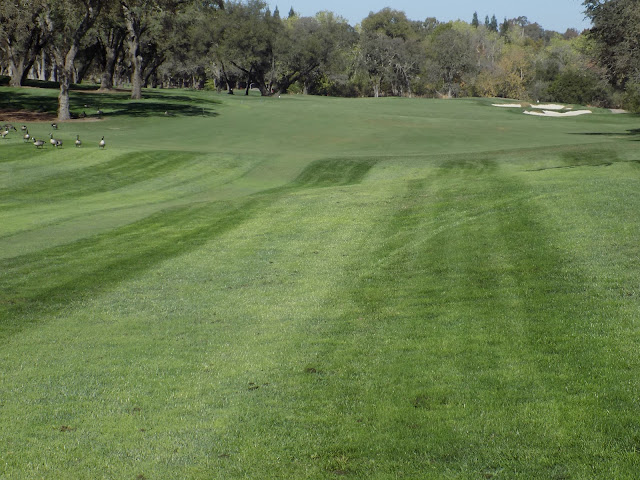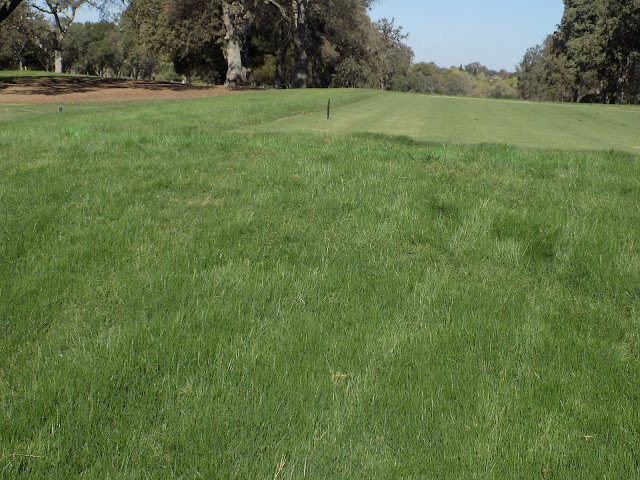Wednesday 12/21/22 is the Winter Solstice, the shortest day of the year and considered the beginning of winter by some, or midwinter by others, because every day forward logs an additional minute or so of daylight. Nighttime versus Daylight will still dominate our days until March 20, 2023 where we will experience the Spring Equinox where the length of our day's and night's will be equal.
These dates are helpful for us to follow in that we can plan for changes that affect how the turf can be cultured and will react to golf course maintenance practices. For example adding a minute of daylight and the solar radiation it provides every day starting December 21st means that moving forward we will be getting that much closer to our Santa Anna Hybrid Bermuda fairways waking up. Watching the seasons go hand in hand with watching the weather as they are perpetually linked and affect everything we do to prepare golf playing surfaces for our Members.
 |
Winter Solstice Sunset at Stonehenge, Wiltshire England.
|
Drainage Work
In a previous course it was mentioned that the need to install
surface drainage in flow lines of fairways is very common after new construction. All of the surface drainage installed on the old fairways was either destroyed or buried during renovation and is no longer functional. And it became very obvious once we started irrigating last year where the new surface drainage was necessary.
We installed surface drainage on hole #'s 10, 4,8,12, throughout the summer to name a few. This week we are installing some more drains on #12 up towards the green. Look for more of this to take place this winter and into 2023.
 |
New surface drainage being installed on #12 fairway between front two bunkers. Aerial view shows scale and length of this first drain on #12. |
2022
As we all know, the golf course at Granite Bay went through drastic changes in 2021, and 2022 was an extension of those changes as we grew in the new turf and fine tuned maintenance practices on the new golf course. Some of the changes were structural increases in turf areas. Besides the fairways converting to warm season Santa Anna Hybrid Bermuda, they grew in size by 20% from 25 acres to 30 acres. The putting surfaces grew in both aggregate size by 30% as well as numbers from 21 greens to 23 greens.
We decreased our total bunker square footage by 28% and went from 77 total sand bunkers to 67 sand bunker's. However the maintenance requirements and man-hours for our new bunkers with more intricate scalloping edges and shapes is more then the older versions as edge trimming is more involved and we hand rake them rather then using a mechanical rake.
We confirmed that we have some work to do on the irrigation system facilitating the need to water our new warm season Santa Anna Hybrid Bermuda independently of our cool season Tall Fescue rough. And we also confirmed that continued sand topdressing and drainage work on these new fairways will give us the fast, firm & sustainable fairways we have yearned for here at Granite Bay for quite some time.
We tied up quite a few loose ends from the 2021 renovation in 2022 as well, including supporting Diamonds Golf's return to the course to finish up water feature work on #12 and tie up some loose ends of their own. It was indeed a busy year including recruiting new GCM employee partners to get all of this work done. We appreciate all of the support we received during this time from the Granite Bay Golf Club Membership
Thank You
The Granite Bay Golf Club Golf Course Maintenance Staff would like to again thank the Granite Bay Membership for their generous contribution to the employee partner holiday fund in which our staff are beneficiaries. Additionally we would like to Thank You for your support of our efforts in 2022. Cleaning up after 2021 was a undertaking and we couldn't have done it without your patience and support.
We would also like to wish You and Yours, from all of us in the Granite Bay Golf Club Maintenance Department, a very Merry Christmas and a Happy New Year!



















































